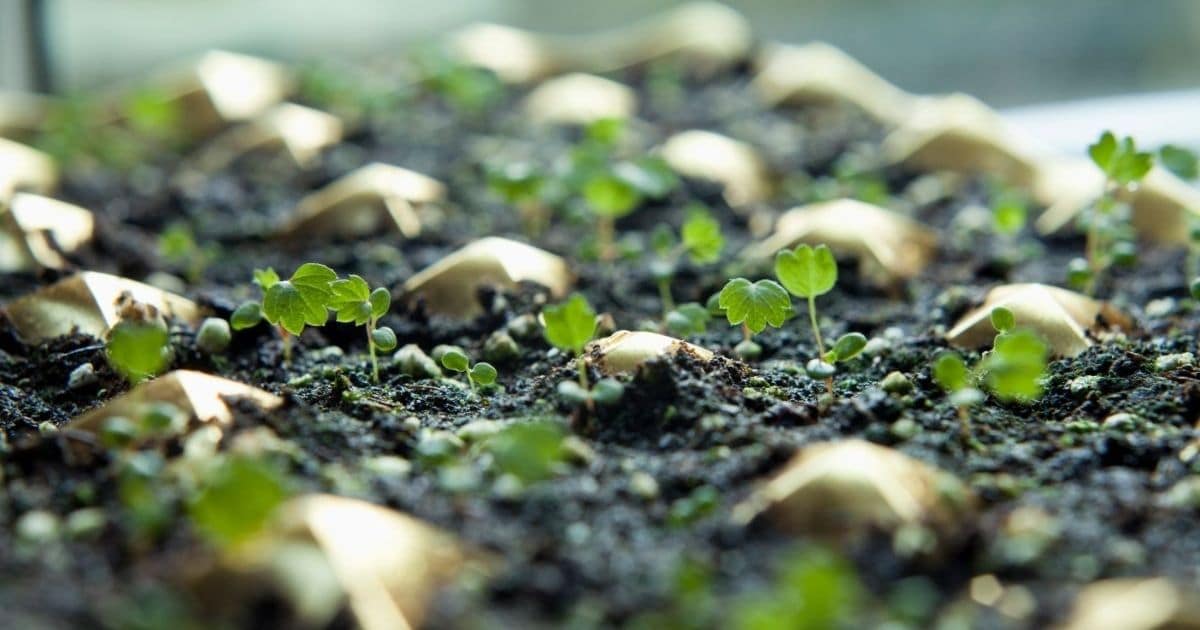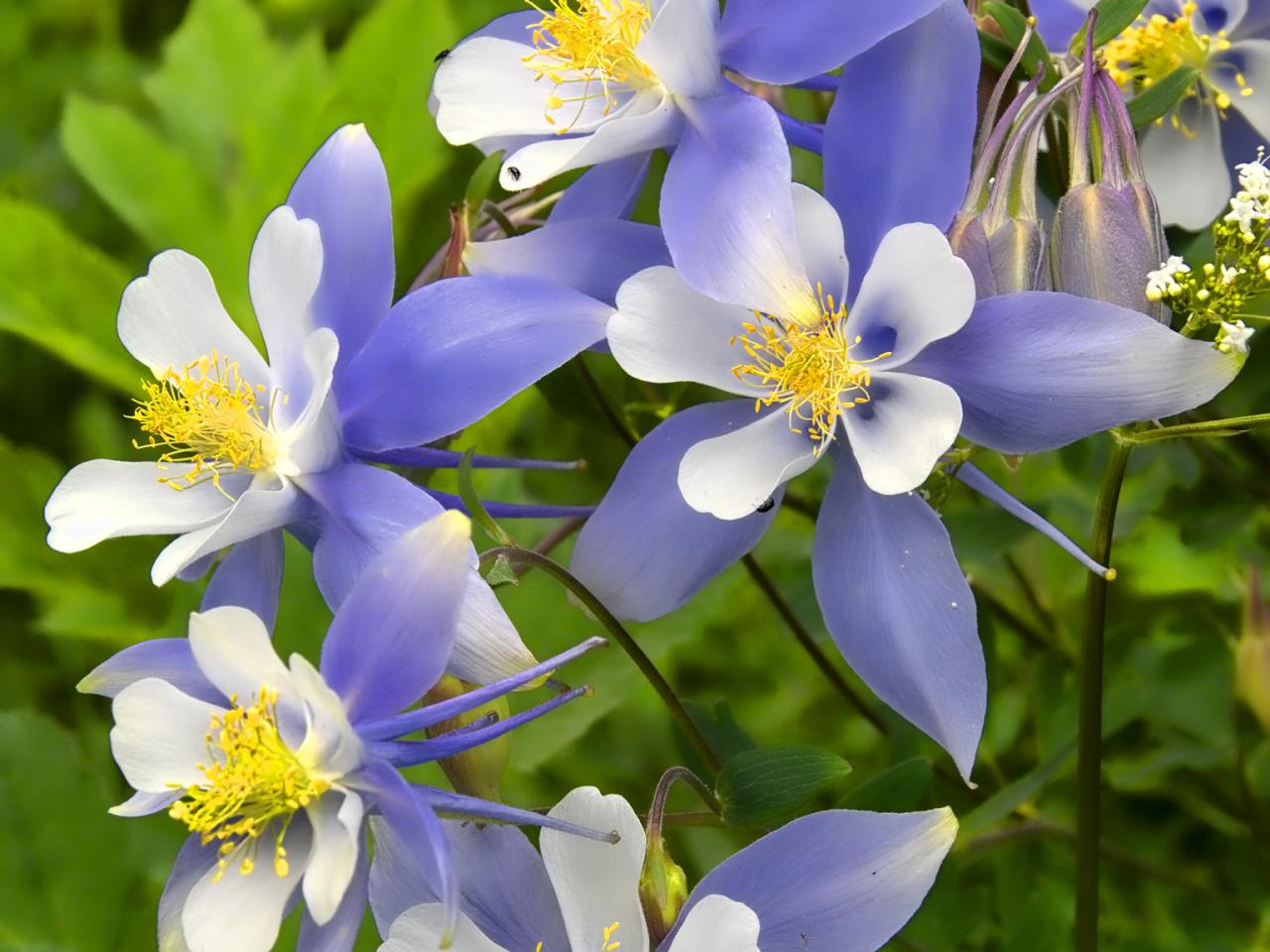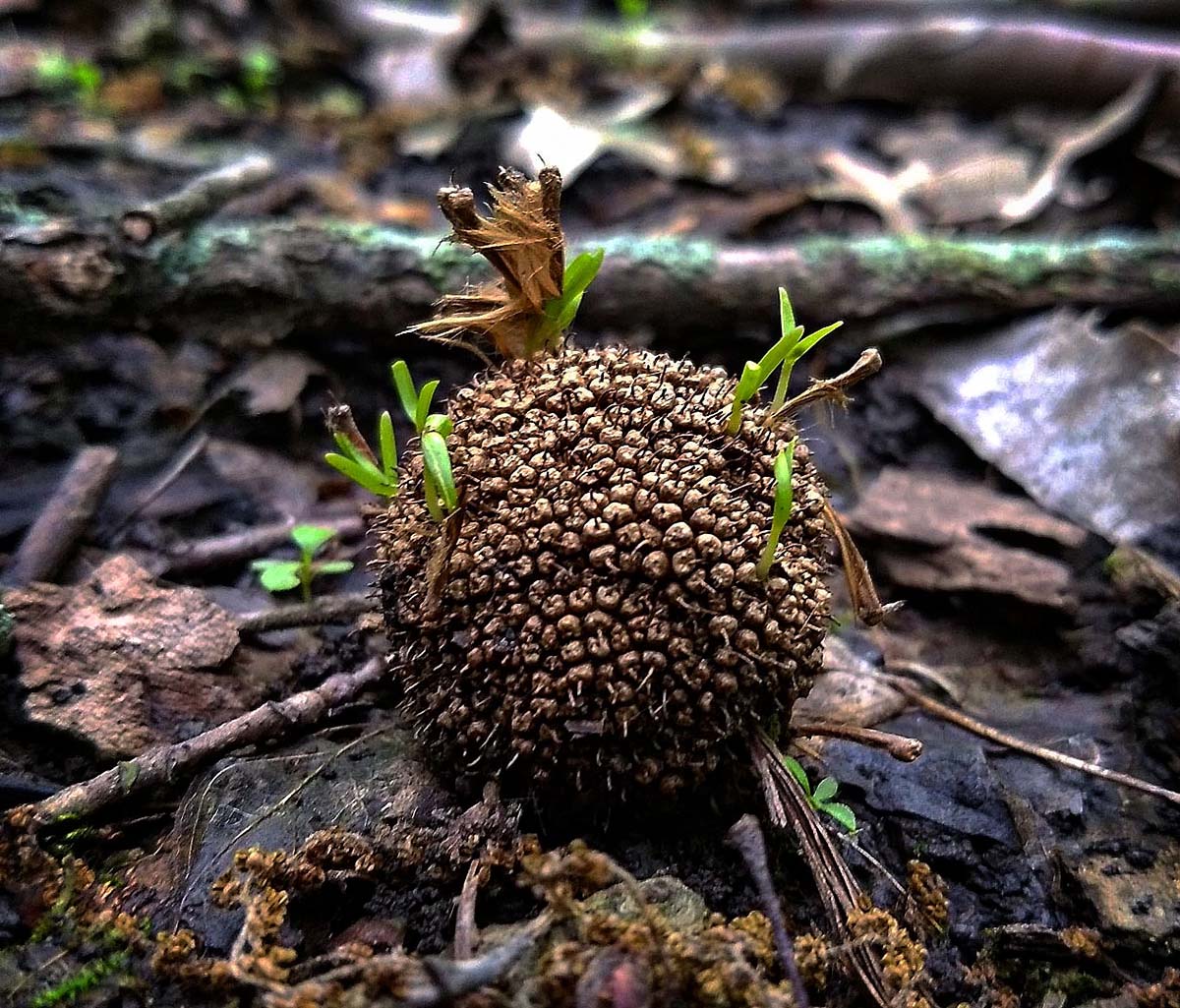Home>Garden Essentials>When Do You Plant Bluebonnet Seeds In Texas


Garden Essentials
When Do You Plant Bluebonnet Seeds In Texas
Modified: March 15, 2024
Plant bluebonnet seeds in your Texas garden at the right time with our helpful guide. Learn when to sow and care for these iconic Texas wildflowers.
(Many of the links in this article redirect to a specific reviewed product. Your purchase of these products through affiliate links helps to generate commission for Storables.com, at no extra cost. Learn more)
Introduction
Welcome to the world of bluebonnets – stunning wildflowers that blanket the Texas landscape with vibrant hues of blue each spring. If you are a gardening enthusiast looking to add a touch of natural beauty to your garden or outdoor space, planting bluebonnet seeds is a wonderful idea. But when is the best time to sow these seeds in Texas?
Bluebonnets, scientifically known as Lupinus texensis, are the state flower of Texas, cherished for their captivating colors and resilience to harsh conditions. These iconic wildflowers thrive in the Lone Star State’s unique climate and soil composition, which make growing them a delight for gardening enthusiasts.
In this article, we will explore the best time to plant bluebonnet seeds in Texas and provide you with some valuable tips on preparing your planting area and maintaining these wildflowers throughout their growing season.
Whether you are a beginner or an experienced gardener, you are sure to find useful information and actionable advice that will help you successfully grow bluebonnet seeds in Texas. So, let’s dive in and discover the secrets to cultivating these gorgeous wildflowers!
Key Takeaways:
- Plant bluebonnet seeds in Texas during fall for successful germination and establishment, allowing natural scarification during winter. Late winter or early spring planting is also suitable, but may result in slightly delayed growth.
- Prepare the planting area by clearing debris, loosening and amending the soil, and sow the seeds with proper watering and thinning. Care for the seedlings with regular watering, mulching, and pest control to ensure healthy growth and vibrant blooms.
Read more: When To Plant Grass Seed In Texas
Understanding Bluebonnet Seeds
Before diving into the best time to plant bluebonnet seeds in Texas, it’s important to understand the nature of these seeds. Bluebonnet seeds are known for their hard outer shell, which acts as a protective barrier. This hard coating prevents the seeds from germinating immediately after being dispersed. Instead, they undergo a process called “scarification” where the seed coat is broken down or weakened, allowing moisture to penetrate and initiate germination.
Bluebonnet seeds, like many wildflower seeds, have been designed by nature to withstand harsh conditions. They have a built-in survival mechanism that ensures the seeds have a higher chance of germination when the circumstances are favorable. Understanding this unique characteristic of bluebonnet seeds is crucial to successfully growing these wildflowers.
It’s also worth noting that bluebonnet seeds have a dormancy period. This means they may not germinate immediately after scarification. Some seeds may lie dormant for several months or even years before sprouting. This is nature’s way of ensuring the seeds will only germinate under the right conditions, such as the arrival of favorable weather.
Now that you have a basic understanding of bluebonnet seeds, let’s move on to exploring the ideal climate and soil requirements for growing these exquisite wildflowers.
Climate and Soil Requirements
Bluebonnets thrive in the unique climate of Texas. They are adapted to the hot and arid conditions that are common in the state. These wildflowers are classified as cool-season annuals and prefer moderate temperatures for optimal growth.
The ideal climate for bluebonnets is characterized by mild winters and early spring rains. The seeds need a period of cold weather to stimulate germination, followed by moist conditions to encourage growth. Texas, with its mild winter temperatures, provides the perfect environment for bluebonnets to flourish.
In terms of soil requirements, bluebonnets prefer well-draining soils. They can tolerate a wide range of soil types, from sandy to clayey, as long as the soil is well-drained. Excessive moisture can cause the roots to rot, so it’s important to ensure the planting area has good drainage.
Additionally, bluebonnets prefer slightly alkaline to neutral soils with a pH range of 7.0 to 8.0. If the soil in your area is too acidic, you can amend it with lime to raise the pH. Conducting a soil test can provide valuable insights into the nutrient levels and pH of your soil, helping you make any necessary adjustments to create an ideal growing environment for bluebonnets.
Now that you understand the climate and soil requirements for bluebonnets, let’s move on to the most awaited question – when is the best time to plant bluebonnet seeds in Texas?
Best Time to Plant Bluebonnet Seeds
The best time to plant bluebonnet seeds in Texas is during the fall months, particularly September and October. Planting during this time allows the seeds to undergo scarification naturally, as they experience the cold temperatures of winter. The cool weather stimulates the breakdown of the seed coat, preparing the seeds for germination once the spring arrives.
By planting bluebonnet seeds in the fall, you are giving them ample time to establish strong root systems before the harsh summer heat sets in. This early start also ensures that the bluebonnets will have enough time to grow and bloom during the following spring.
It’s important to note that bluebonnets are sun-loving plants and require at least 6 hours of direct sunlight a day to thrive. When selecting a planting location, choose an area that receives full sun and has well-draining soil.
While fall is the optimal time to sow bluebonnet seeds, you can still have success if you missed the prime planting window. Late winter or early spring, around February or March, can also be a suitable time to plant bluebonnet seeds in Texas. However, the germination and growth may be slightly delayed compared to seeds planted in the fall.
When sowing bluebonnet seeds, it’s essential to prepare the planting area properly to give them the best chance of success. Let’s explore how to prepare the planting area for bluebonnet seeds.
Bluebonnet seeds should be planted in the fall in Texas, between September and November. This allows the seeds to establish before the winter and bloom in the spring.
Preparing the Planting Area
Preparing the planting area is a crucial step in ensuring the success of your bluebonnet seeds. Follow these steps to create an optimal environment for germination and growth:
- Clear the Area: Remove any existing grass, weeds, or debris from the planting area. This will help prevent competition for resources and allow the bluebonnet seeds to establish themselves.
- Loosen the Soil: Use a garden rake or tiller to loosen the top layer of soil. This will improve drainage and allow the seeds to penetrate the soil more easily.
- Amend the Soil: If the soil is compacted or lacks nutrients, consider adding organic matter, such as compost or well-rotted manure, to improve its texture and fertility.
- Level the Ground: Smooth out the soil surface, removing any large clumps or rocks. This will provide an even base for sowing the bluebonnet seeds.
- Consider Soil Testing: Conduct a soil test to determine the pH level and nutrient content of the soil. Based on the results, you can make any necessary adjustments to ensure the soil is ideal for bluebonnet growth.
Once you have prepared the planting area, you are ready to sow the bluebonnet seeds and begin the exciting journey of watching these enchanting wildflowers bloom. Let’s move on to the next section, where we will discuss the proper techniques for planting bluebonnet seeds.
Read more: When To Plant Bermuda Grass Seed In Texas
Planting Bluebonnet Seeds
Now that you have prepared the planting area, it’s time to sow the bluebonnet seeds. Follow these steps to ensure proper planting:
- Seed Distribution: Broadcast the bluebonnet seeds evenly over the prepared soil. Aim for a seeding rate of about 20 to 30 seeds per square foot. You can gently press the seeds into the soil using the back of a garden rake or your hands, ensuring they make good contact with the soil.
- Watering: After sowing the seeds, gently water the area with a fine mist or a sprinkler. The goal is to provide moisture to kickstart the germination process without causing the seeds to wash away. Keep the top inch of soil consistently moist until the seeds germinate.
- Germination: Bluebonnet seeds typically germinate within 10 to 20 days, but it can take longer depending on the conditions. Be patient and continue to provide regular, light watering to encourage germination. As the seedlings emerge, gradually reduce the frequency of watering, allowing the soil to dry out slightly between waterings.
- Thinning: Once the bluebonnet seedlings have grown a few inches tall, thin them out to ensure proper spacing. Thin to a spacing of 6 to 8 inches between plants to provide adequate room for growth and airflow.
- Maintenance: Monitor the bluebonnet seedlings for pests and diseases. Remove any weeds that may compete with the young plants for resources. Water the seedlings during dry periods, ensuring they receive approximately 1 inch of water per week.
By following these steps, you can give your bluebonnet seeds the best chance of success. Now, let’s move on to the next section, where we will discuss caring for bluebonnet seedlings to ensure healthy growth and abundant blooms.
Caring for Bluebonnet Seedlings
Once your bluebonnet seedlings have emerged, it’s important to provide proper care to ensure their healthy growth and abundant blooms. Here are some essential tips for caring for bluebonnet seedlings:
- Watering: Bluebonnet seedlings require regular watering to establish strong root systems. Water them deeply once a week or whenever the top inch of soil feels dry. Avoid overwatering, as this can lead to root rot.
- Fertilization: Bluebonnets are adapted to low-nutrient soils, so they generally do not require extensive fertilization. However, if the soil is deficient in nutrients, you can apply a balanced, slow-release fertilizer in early spring to provide a gentle boost of nutrients.
- Mulching: Apply a layer of organic mulch, such as straw or wood chips, around the bluebonnet seedlings. Mulching helps retain moisture, suppresses weed growth, and regulates soil temperature.
- Weed Control: Regularly inspect the area around the bluebonnet seedlings for weeds. Remove any weeds by hand, taking care not to disturb the delicate roots of the bluebonnets.
- Pruning: Bluebonnets generally do not require pruning. However, if any stems become damaged or diseased, you can carefully trim them back to promote healthy growth.
- Protection: Bluebonnets are generally hardy plants, but they can be susceptible to pests such as aphids or snails. Inspect the seedlings regularly and take appropriate measures to control any pests that may appear. Additionally, protect the seedlings from strong winds and heavy rains, if necessary.
With proper care and attention, your bluebonnet seedlings will develop into beautiful, vibrant plants that will grace your garden with their stunning blooms. Now, let’s wrap up this article with a few concluding thoughts.
Conclusion
Bluebonnets are a true Texas treasure, captivating the hearts of residents and visitors alike with their stunning blue blooms. By understanding the nature of bluebonnet seeds, the ideal climate and soil requirements, and the best time to plant them, you can successfully grow these beautiful wildflowers in your own garden.
Fall, particularly September and October, is the best time to sow bluebonnet seeds in Texas. This allows for natural scarification during the winter months, ensuring successful germination and establishment. However, if you missed the fall planting window, late winter or early spring can also be a suitable time to plant bluebonnet seeds.
Properly preparing the planting area by clearing debris, loosening the soil, and amending it if necessary, sets the stage for successful growth. Sowing the seeds, providing adequate watering, and thinning the seedlings as they grow allows for optimal development. Ongoing care, including watering, fertilizing, mulching, and pest control, ensures the health and vigor of the bluebonnet plants.
As you tend to your bluebonnets, remember to appreciate their resilience and adaptability. These wildflowers have managed to thrive in the unique climate and soil conditions of Texas, reflecting the state’s spirit and beauty.
So, whether you’re a proud Texan looking to showcase your state flower or simply a gardening enthusiast drawn to the allure of bluebonnets, with the knowledge and tips provided in this article, you can create a vibrant and picturesque bluebonnet garden that will bring joy for years to come.
Now, grab your bluebonnet seeds, roll up your sleeves, and get ready to experience the beauty of Texas in your own backyard!
Frequently Asked Questions about When Do You Plant Bluebonnet Seeds In Texas
Was this page helpful?
At Storables.com, we guarantee accurate and reliable information. Our content, validated by Expert Board Contributors, is crafted following stringent Editorial Policies. We're committed to providing you with well-researched, expert-backed insights for all your informational needs.















0 thoughts on “When Do You Plant Bluebonnet Seeds In Texas”